“Once more into the breach, my dear friends…”
Such a quip may be deemed appropriate as we endured the media onslaught this past weekend for the third and final perigee Full Moon of 2013.
Tonight, on Monday, July 22nd, the Moon reaches Full at 18:15 Universal Time (UT)/4:15 PM EDT. This is only 21.9 hours after reaching perigee, or the closest point in its orbit at 358,401 kilometres from the Earth on the Sunday evening at 20:28 UT.
But the dazzling pictures taken by weekend astrophotographers are already pouring in. Ironically, its often best shoot the Moon the night before, when it’s already cleared the horizon a bit at local sunset. This often places it up into the colorful region of the sky known as the Belt of Venus as it rises while the Sun sets.
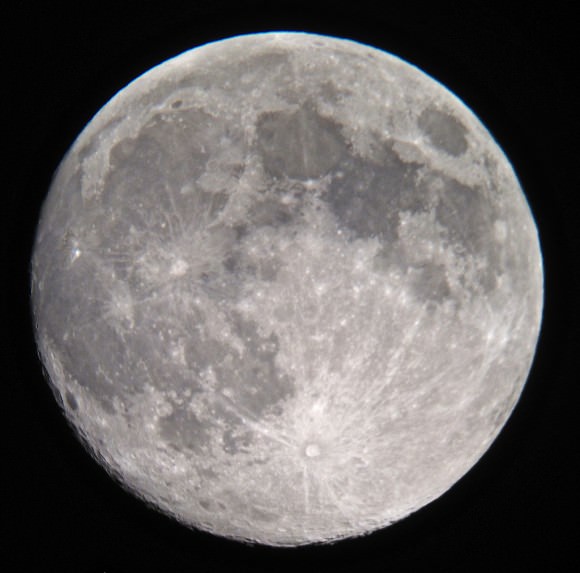
The term supermoon has entered into popular vernacular in recent years, and seems to have found a life of its own on the Internet. It hasn’t quite reached the notoriety of the “Mars will appear as large as the Full Moon!!!” email that creeps into our inbox every August since 2003, at least not yet.
For now, the supermoon is at least based on an event that actually occurs in nature. Of course, astronomers want you to know that the Moon passes through perigee every anomalistic period of 27 days 13 hours 18 minutes & 33.2 seconds, whether it’s at Full or no.
And the recent three month grouping of Full Moons gave us an excellent study in how the Moon looks just about the same in size near every Full Moon. Astrophysicist Neil DeGrasse Tyson emphasized on Twitter back in June that it’s “Okay to call tonight’s Full Moon “super” but only if you would call a 13-inch pizza “super” compared with a 12-inch pizza.”
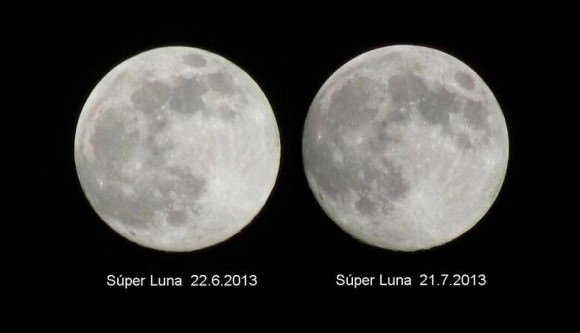
Still, it’s always an interesting exercise to compare the perigee Moon with the farthest Full Moon of the year when its near apogee, which occurs this year December 17th, just four days before the December Solstice and hence also the most northern Full Moon of the year.
The term “Supermoon” still remains very much a popular rather than a scientific term- don’t expect to hear astronomers use it with each other at observatories. If you reckon a supermoon as a Full Moon occurring within 24 hours of lunar perigee, “3x supermoon years” like 2013 aren’t all that uncommon. Currently, these sorts of triplets are occurring yearly and moving slowly forward due to the 8.85 year precession of the line of apsides. Last year’s 3x set of supermoons occurred on April, May, and June and next year’s will occur on the months of July, August and September. Brace yourself, as the next supermoon season starts on July 13th, 2014.
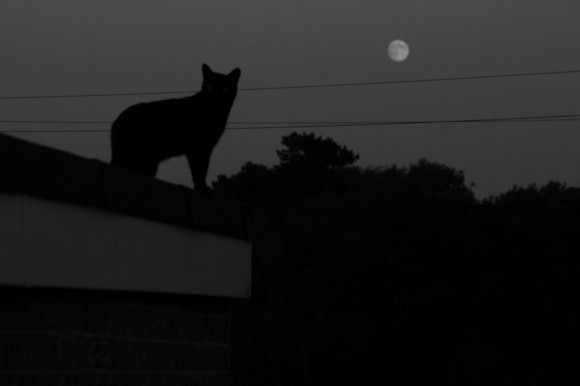
The perigee Moon also causes wider than usual variations of ocean tides worldwide as well. For example, amateur astronomer Louis Suarato notes that the tides at South Harpswell, Maine will vary almost 12 feet (3 metres) from low to high tide today. And no, the perigee/supermoon has never been linked to an increase in earthquake activity.
But there are more things afoot with our nearest neighbor in space than just supermoon hi-jinks.
The July Full Moon is also known to the Algonquian Indians (and adopted by the Farmers’ Almanac) as the Hay, Buck, and Thunder Moon. The reason for this is obvious, as July is a time for monsoon rains and thundershowers for much of the northern hemisphere.
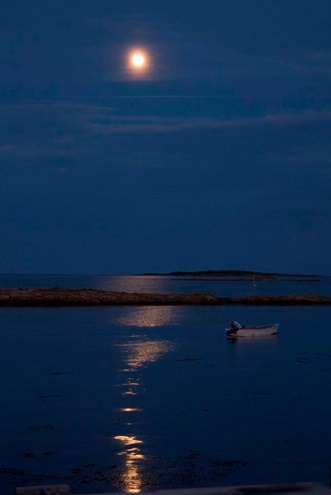
A proposal has also been made by Francine Jackson to name the July Full Moon the Apollo Moon to commemorate the July 20th, 1969 anniversary of Neil Armstrong & Buzz Aldrin’s landing of Apollo 11 on the Moon.
And speaking of almanacs, the next Full Moon on August 20th is also a Blue Moon as defined in ye ole Maine Farmer’s Almanac as “the 3rd in a season with 4”. The story goes that printers in the 1930’s used blue ink to denote that pesky extra Moon of the season. To have four Full Moons in one season (i.e. from solstice to equinox and vice versa) The first Full Moon has to fall very near the beginning of the season, as it did this past June when the Full Moon fell just 54 hours after the solstice. I know, the common definition of “the 2nd Full Moon in a month containing two” is simpler and less archaic…
The Moon also occults (passes in front of) the +3 magnitude star Beta Capricorni tonight just six hours after passing Full at around 00:59 UT for northern South America and northern Africa. Another fine occultation of the +3.5th magnitude star Epsilon Tauri by the 26% illuminated waning crescent Moon occurs the morning of August 1st for the eastern United States. And the cycle of occultations of the bright star Spica by the Moon continues on August 12th, this time favoring the Far East.
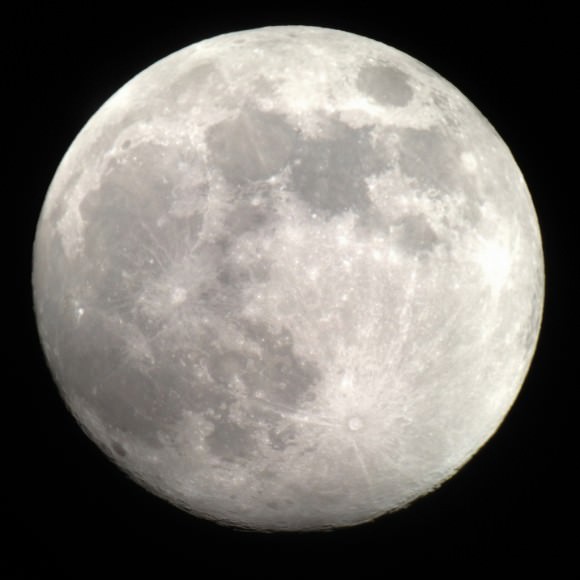
The Moon also passes the planets Neptune on July 25th and Uranus 27th. Both ice giants are headed towards opposition over the coming months… watch this space for our all-inclusive observing roundups!
And finally, the phase of the Moon plays into the prospects for two fine late summer meteor showers. The Moon will present a Last Quarter/waning crescent phase for the Delta Aquarids spanning July 29th-31st & will head toward 1st Quarter phase on August 14th during the week of the Perseids. More to come on both!

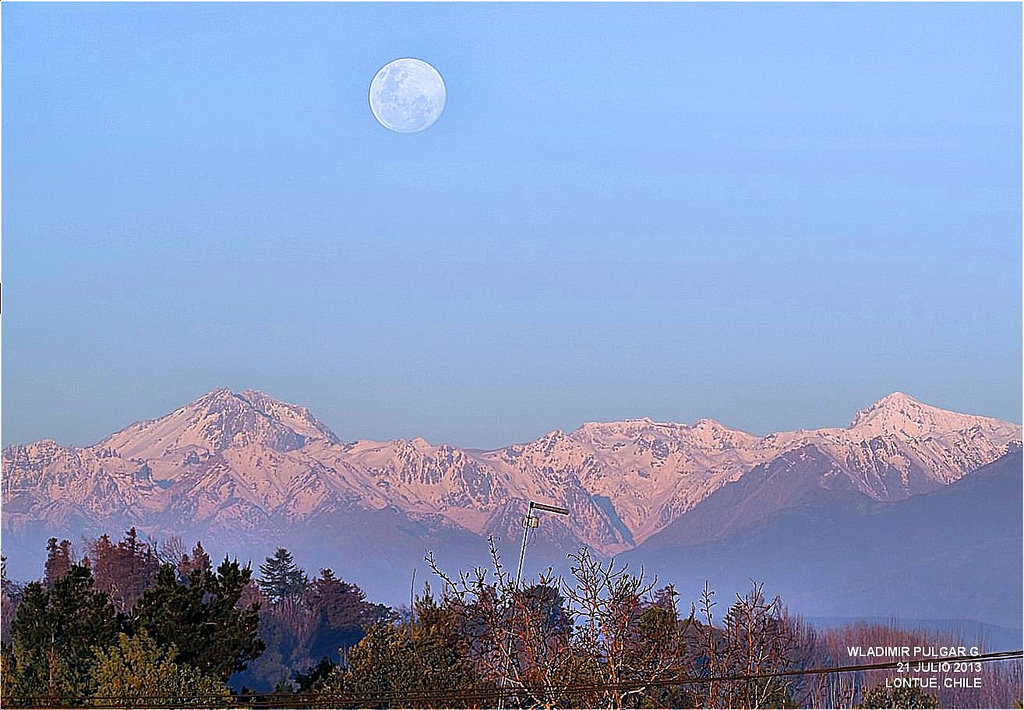
Small correction I believe, last line: the moon heads into 1st qtr phase on August 14th during the Perseids.
Made me scared I’d missed a shower, there 😉
Thanks, good catch. I’ve still got July on the brain!
I know, there is NO proven correlation between lunar tides and earthquake activity. But still, I like to watch the daily earthquake totals during spring tides and ‘supermoon’ events anyway. Here, I’ll note a recent mag. 6.1 quake off Prince Charles Island -today! That location is not where one usually sees much quake activity. Also of note, there have been three other major quakes around the Pacific ‘rim of fire’ in the last week. http://earthquakes.tafoni.net/
During the last ‘super-moon’ one unusual(?) mag. 6 quake was recorded on the mid-Atlantic ridge. Shortly thereafter a mysterious ‘tidal wave’ was reported along the Northeast coast of the USA.
oTay and alrighty then… why wouldn’t lunar tides have an effect on the Earth’s crustal movements? Doesn’t that appear sensible? Definitive evidence aside, I note that lunar tidal influences would not necessarily be time co-incident which may have skewed the data? i.e. there appears to be a time lag between tidal events and earthquakes, related to the ‘plastic’ nature of our semi-molten mantle. Reflexive crustal motions anyone? Lets keep an eye on that for a week or so? oTay?
– why wouldn’t lunar tides have an effect on the Earth’s crustal movements? Doesn’t that appear sensible? –
1. Because the data does not show it.
2. Earth quakes also do happen when there is no Super Moon
3. It would happen twice a day with the moon always at a certain position.
4. The moon is smearing out potential earth quakes before they can happen. (You cant build a high enough sandcastle when the tide washes it away twice a day)
5. Even though the pull is high, everything is pulled with the same force up cancelling differential forces.